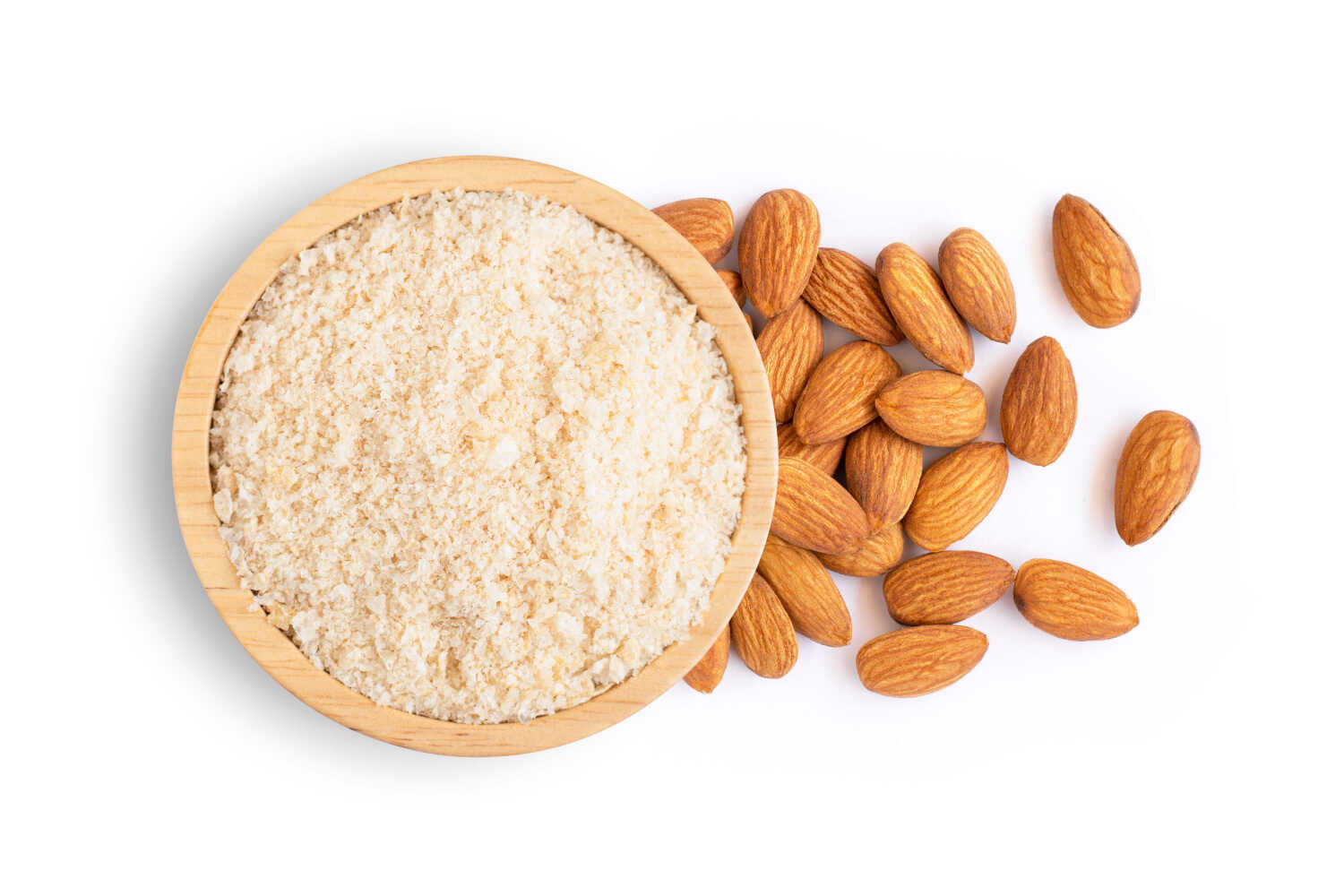
Almonds are one of the tastiest and healthiest members of the nut family. Adding almonds to any dessert enhances its flavor, texture, and appeal. This tasty nut does not only provide necessary protein and fat to the body, but it is also beneficial for the brain. While adults and older kids can eat almonds whole, almond powder for toddlers is a better option.
Giving raw almonds to toddlers can increase the risk of choking hazards. Thus to safely provide the benefits of almonds to your toddler you need to make almond powder. Almond powder has numerous health benefits and is high in nutritional value. Making almond powder at home and adding it to your toddler’s diet is also very easy. In this article, you will get all your questions answered regarding almond powder for toddlers.
In This Article
- Is Almond Powder Safe For Toddlers?
- When to Introduce Almond Powder to Kids?
- Nutritional Profile of Almond Powder
- Top 5 Benefits of Almond Powder For Toddlers
- How to Make Almond Powder at Home?
- Why is it Good to Peel The Almond Skin For Making The Powder?
- Ways to Include Almond Powder in Your Toddler’s Diet
- FAQ’s
Is Almond Powder Safe For Toddlers?
Almond powder for toddlers is completely safe, unless they have a nut allergy. At least 19 percent of kids less than 2 years of age had nut allergies. So to confirm if your toddler is allergic to a ground nut or a tree nut you can separately provide it to them and check for any allergic reactions. If everything seems normal then you can welcome almonds in your toddler’s diet wholeheartedly.
When to Introduce Almond Powder to Kids?
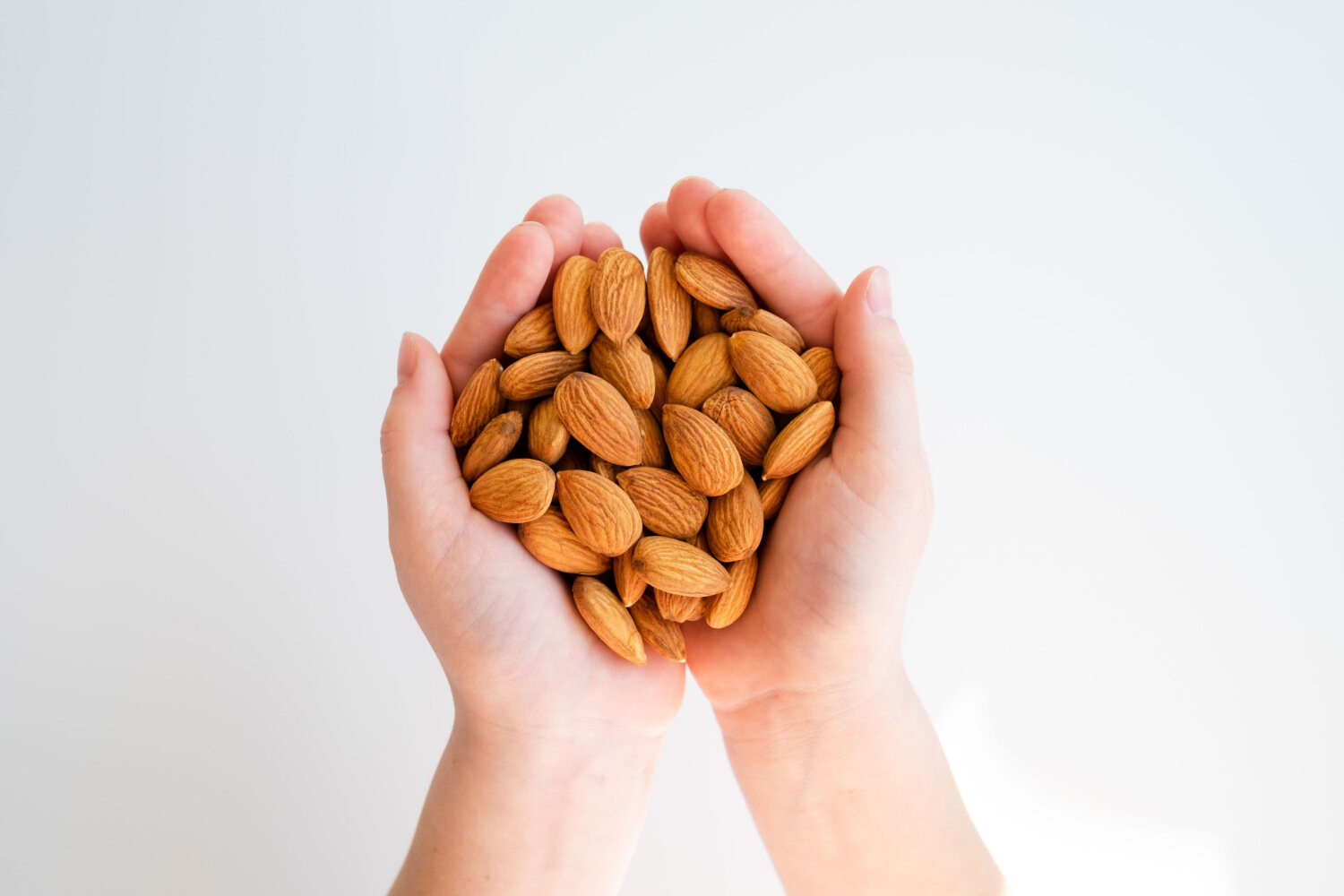
You can introduce almond powder to your little one anytime after they cross the 6-month mark. However, experts advise you to delay introducing almonds or any other nuts to kids until 9 months of age. This is because their developing digestive system may not successfully break the high protein and fat that nuts contain. Thus introduce almonds to your kid after 9 months when they get used to digesting solids a little bit.
If you have not introduced nuts or almond powder till your toddler crossed the 1-year mark, then you can start it after they turn 1-year-old. By this time, you are fairly aware of what your toddler likes and dislikes, and also how good their digestive system is.
Still introducing nuts can be an important step. So, it’s better to give them nuts or nut powder during the morning or day time. As with any new food item, wait for any reactions which may show up. Almond powder for toddlers is safe to give if they are not allergic to it. You can mix it in their milk, curd, or give it as smoothie or in breakfast cereal etc.
Nutritional Profile of Almond Powder
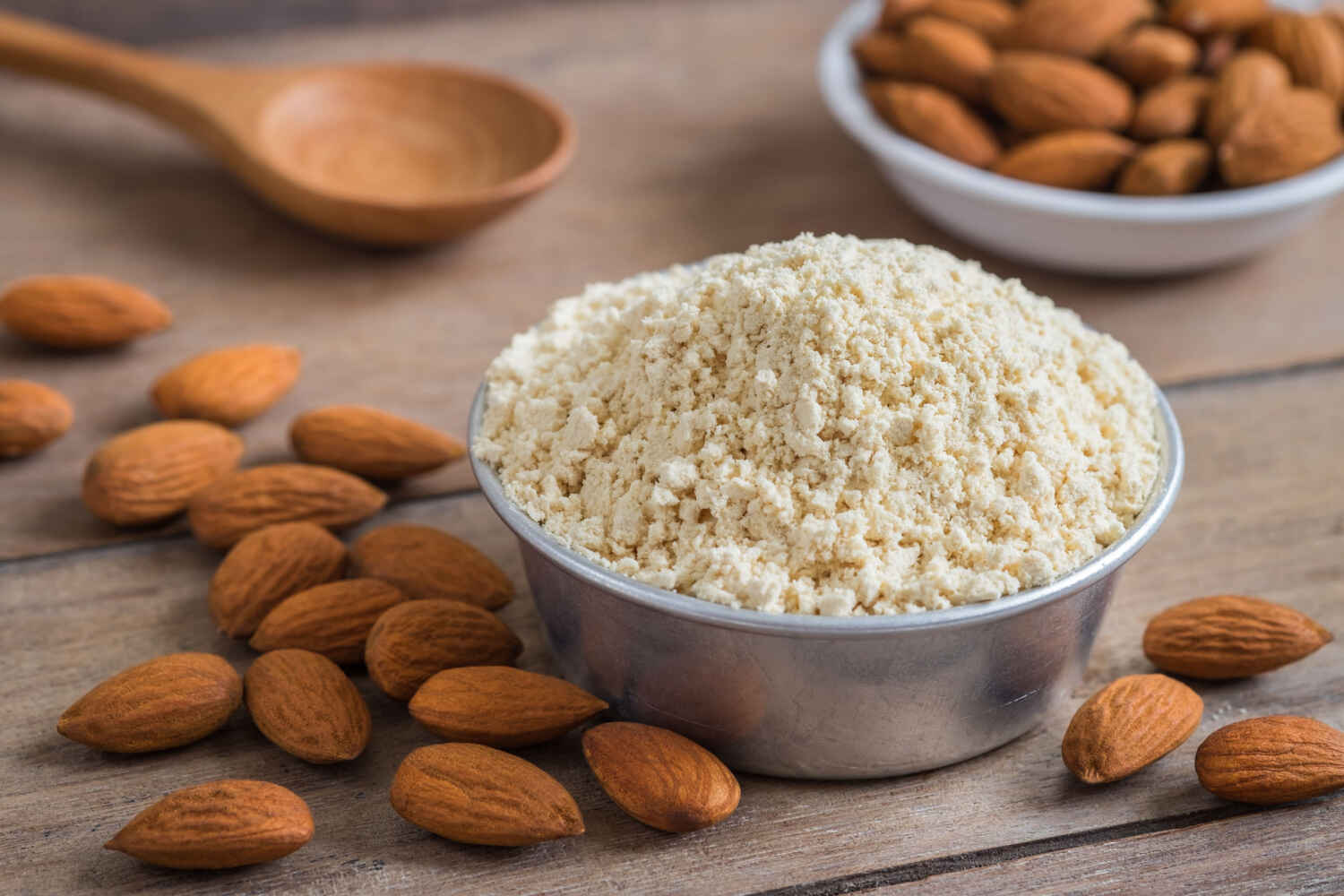
Almonds are rich in nutrients, vitamins, and minerals necessary for brain and muscle development in the growth years. According to the US Department of Agriculture (USDA), the nutritional content of 100g of almond powder is-
|
Nutrients |
Values |
Unit |
| Protein | 21.43 | g |
| Total Lipid (Fat) | 53.57 | g |
| Dietary Fiber | 7.1 | g |
| Carbohydrates | 21.43 | g |
| Calcium | 236 | mg |
| Potassium | 679 | mg |
| Iron | 3.57 | mg |
| Energy | 607 | kcal |
Since almond powder is made from almonds, it is also equally beneficial for the toddlers.
Top 5 Benefits of Almond Powder For Toddlers

Almond powder is rich in essential vitamins and antioxidants which have several benefits for the body. Here are the top 5 benefits of almond powder for toddlers –
- Almond powder contains calcium, which is helps in development of stronger bones, and teeth for your toddler
- It is alkaline in nature (almonds being alkaline), hence it helps to strengthen the immune system in the kids
- The healthy plant protein and fat in almonds provide instant energy to the body. So your toddler can do all the physical activities without getting tired
- The protein present in almond powder helps in the development of muscles. Protein is also essential for good hair, nails, bones etc.
- Fiber in the powder will help in improving digestion
How to Make Almond Powder at Home?
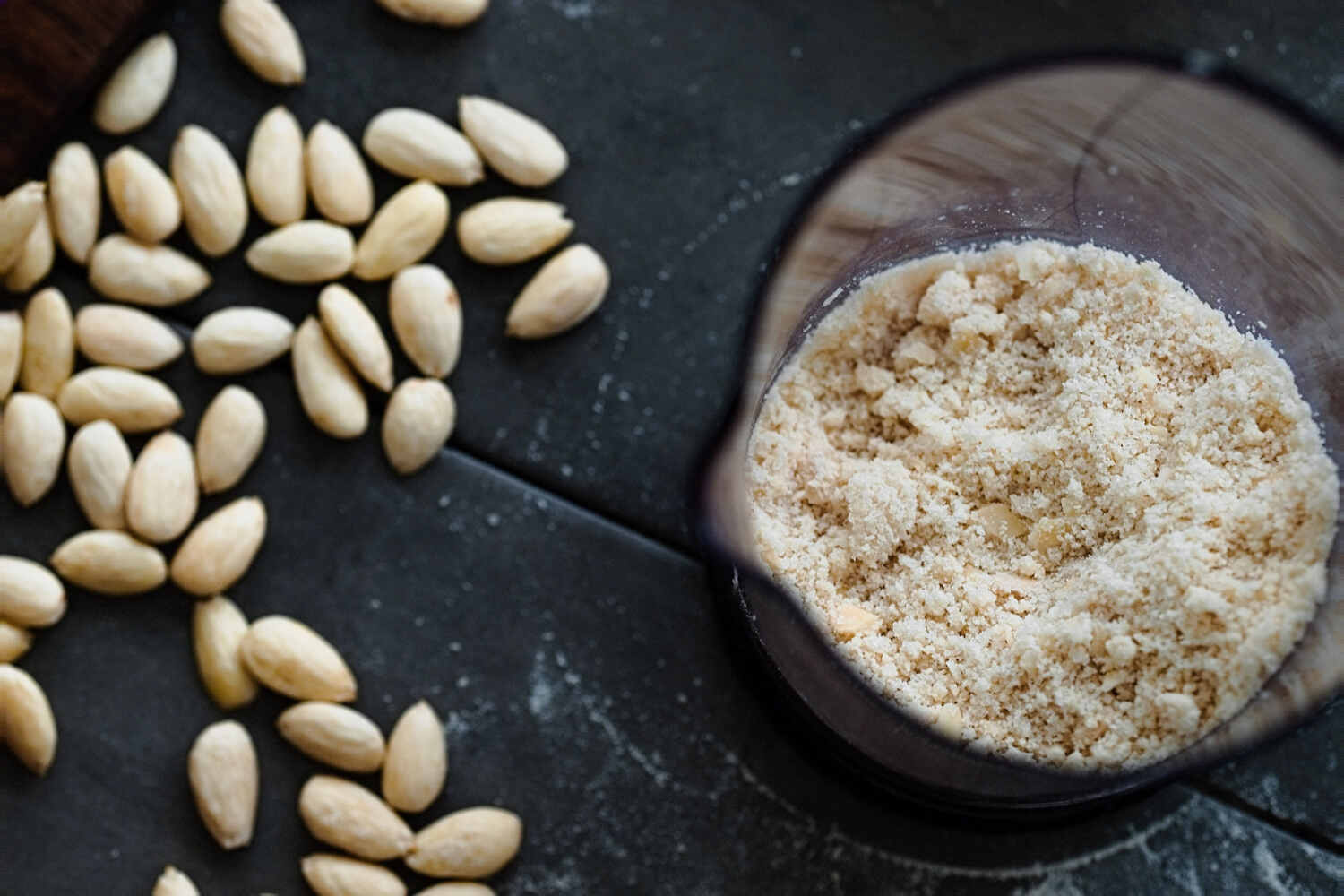
Now that you know how much almonds and almond powder are beneficial for your kid, it is time to take action. Making almond powder at home is very easy. Here are the steps you need to follow-
- First, soak the almond nuts in clean water for at least 30 minutes so that you can easily peel off their skin
- Let the almonds dry for another 30 minutes
- Dry roast the almonds in a pan until they turn a bit golden. Let it cool
- Once it is cooled down, put them in a blender
- Blend till you get a smooth fine powder. But do not overdo it or else the almonds will release oil
- Store the almond powder in an airtight container for future use
- If you live in a hot and humid region then refrigerate it
Why is it Good to Peel The Almond Skin For Making The Powder?
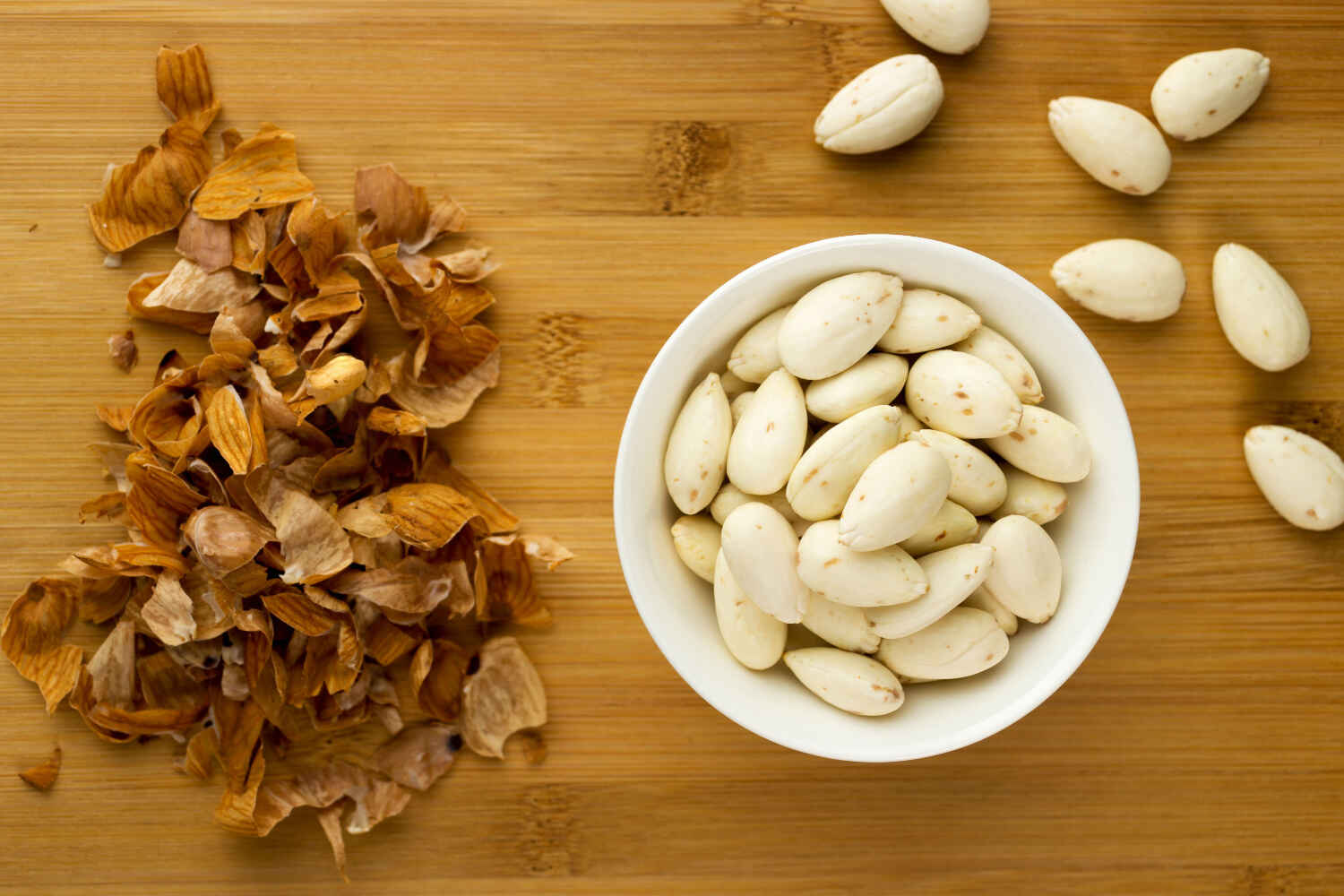
We know it is tiresome to peel the skin of each almond but it is important to do so before preparing the almond powder for toddlers. That’s because the almond peel contains tannin acid. This tannin acid is an ‘antinutrient’, meaning it will hamper the absorption of nutrients present in the almonds by the body.
Also, almond skin is fibrous, and it will be difficult for the toddler’s still developing digestive system to digest it properly. It may lead to stomach upset etc. Thus it is better to peel the almond skin before offering it to your toddler for the first few years at least.
Ways to Include Almond Powder in Your Toddler’s Diet

Including almond powder in your toddler’s diet is very simple. Almond powder is so versatile that you can add it to any sweet or savory dish you want-
- Add almond powder in poha, porridge, or semolina, or sprinkle it over fresh fruits to serve to your toddler
- You can mix almond powder in cereal for an energy boosting breakfast
- Make simple milk tasty and healthy by adding almond powder to it
- Adding almond powder to desserts enhances its flavor. You can mix almond powder in pudding, cakes, cookies, laddoos, halwas anything that you want
- You can even add almond powder to the boiled vegetables to give it a nutty flavor
- Add it to smoothies to enhance the flavor
- You can add it to curd and give to your toddler
- You can use it to make pancakes or cheela
- Mix it with the flour to make chapattis, parathas etc.
Almonds can be a great source of daily protein, fat, and fiber for your toddler. Just one or two teaspoons of almond powder can effectively provide the daily nutrient to your toddler. Almonds are also effective for brain cell development. So, if your toddler is not allergic to almonds, then you can consider giving them almond powder in various ways. Just remember to consult the pediatrician before introducing almond powder in your toddler’s diet.
FAQ’s
1. Is Almond Powder Good For Cough?
Yes, almond powder can effectively fight against cough and other bronchial problems. Polyphenols present in the almond skin have disease-preventing and fighting properties against coughs and colds. So just grind whole almonds with skin and use for cough.
2. How Many Almonds Should a Toddler Eat in a Day?
Almonds, no matter how nutritious, should be given in moderation to your toddler. You can introduce it by giving 1 or 2 almonds per day to your toddler. You can increase this to 4 to 5 almonds a day.

